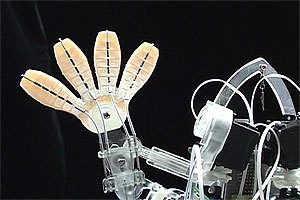I was a biologist once, before I got into television, so I find these times particularly trying when I see schoolteachers and otherwise intelligent people calling evolution into question. That's part of the reason that I jumped at the chance to co-produce a story about bio-inspiration (the other reason being that I LOVE geckos...which will make more sense if you watch our QUEST Bio-inspiration segment).

Bio-inspired design borrows its creative inspiration from models and systems in nature, that is, plant and animal parts that have been slowly tweaked for over 3.8 billion years. But that doesn't mean that nature's designs are perfect. In fact, that's what makes the process of engineering things based on natural models so difficult. You have to figure out how to pull the aces from the evolutionary discard pile. As professor Bob Full at U.C. Berkeley explained in our first phone conversation, that's also why scientists now use the term "bio-inspiration" rather than the more commonly known term "biomimicry." Biologists and engineers are not looking to simply mimic nature, because there are all kinds of dead ends and redundancies in natural systems that would be pointless to recreate in an optimized, man-made piece of technology. One of the examples he gave me is a kind of grasshopper that if you were to copy it, you would copy neurons that go to nothing, they don't connect to any muscles, and that's because during evolution the adults lost their ability to fly. The neurons going to the muscles are still there, but the muscles aren't there anymore. No need to copy that, right?
So what a biomimeticist does is look to nature to find plants & animals with remarkable performance abilities, and studies their adaptations for inspiration to design something new. For example, if you want to make a tiny robot that can fly, then look at the best fliers. If you want to design a blade that moves quickly through fluids, or an Olympic swimsuit that minimizes drag, then look to the most efficient swimmers. Now that's what I call "intelligent design!"